Author: Paul Amico
Bred as an American alternative to noble hops that’s less susceptible to mildew and released in 1998, Sterling is said to impart a pleasant blend of spicy and fruity aromatics to beer. While typically reserved for later kettle additions, Sterling possesses a moderate level of alpha acids with relatively low cohumulone, making it a decent bittering hop as well.
Alpha: 6 – 12%
Beta: 4 – 6%
Cohumulone: 22 – 28% of alpha acids
Total Oil: 1.3 – 1.9 mL/100g
Myrcene: 44 – 48%
Humulene: 19 – 23%
Caryophyllene: 5 – 7%
Farnesene: 11 – 17%
Linalool: < 1%
ß-Pinene: < 1%
Geraniol: < 1%
Parentage: Saaz, Cascade, Early Green, Brewer’s Gold, and an unknown variety
I make a good amount of pale lager and tend to rely on noble hops. Even after a decade of brewing, I’d never given Sterling a shot and was curious to see how it’d play in a single hop Pale Ale.
| MAKING THE BEER |
Sticking with the standard Hop Chronicles Pale Ale recipe, I made adjustments to the hopping rates to maintain a similar IBU in the finished beer.
Sterling Pale Ale
Recipe Details
| Batch Size | Boil Time | IBU | SRM | Est. OG | Est. FG | ABV |
|---|---|---|---|---|---|---|
| 5.5 gal | 60 min | 40.8 IBUs | 4.0 SRM | 1.053 | 1.012 | 5.4 % |
| Actuals | 1.053 | 1.011 | 5.5 % | |||
Fermentables
| Name | Amount | % |
|---|---|---|
| Pale Malt (2 Row) US | 10 lbs | 83.33 |
| Vienna Malt | 2 lbs | 16.67 |
Hops
| Name | Amount | Time | Use | Form | Alpha % |
|---|---|---|---|---|---|
| Sterling | 24 g | 60 min | First Wort | Pellet | 6.5 |
| Sterling | 24 g | 30 min | Boil | Pellet | 6.5 |
| Sterling | 24 g | 15 min | Boil | Pellet | 6.5 |
| Sterling | 56 g | 2 min | Boil | Pellet | 6.5 |
| Sterling | 56 g | 4 days | Dry Hop | Pellet | 6.5 |
Yeast
| Name | Lab | Attenuation | Temperature |
|---|---|---|---|
| Dieter (G03) | Imperial Yeast | 75% | 60°F - 69°F |
Notes
| Water Profile: Ca 92 | Mg 1 | Na 10 | SO4 153 | Cl 50 |
Download
| Download this recipe's BeerXML file |
After collecting the full volume of water and adjusting it to my desired profile, I hit the switch on my electric controller.
As the water was heating up, I weighed out and milled the grains.
Once the strike water was properly heated, I stirred in the grains and check to make sure I hit my desired mash temperature.
During the mash rest, I weighed out the kettle hop additions.
When the 60 minute mash rest was finished, I removed the grains from the sweet wort and set the controller the heat it up. Following a 60 minute boil, I used my CFC to chill the wort during transfer to a sanitized fermenter.
A refractometer reading indicated the wort hit my target OG.
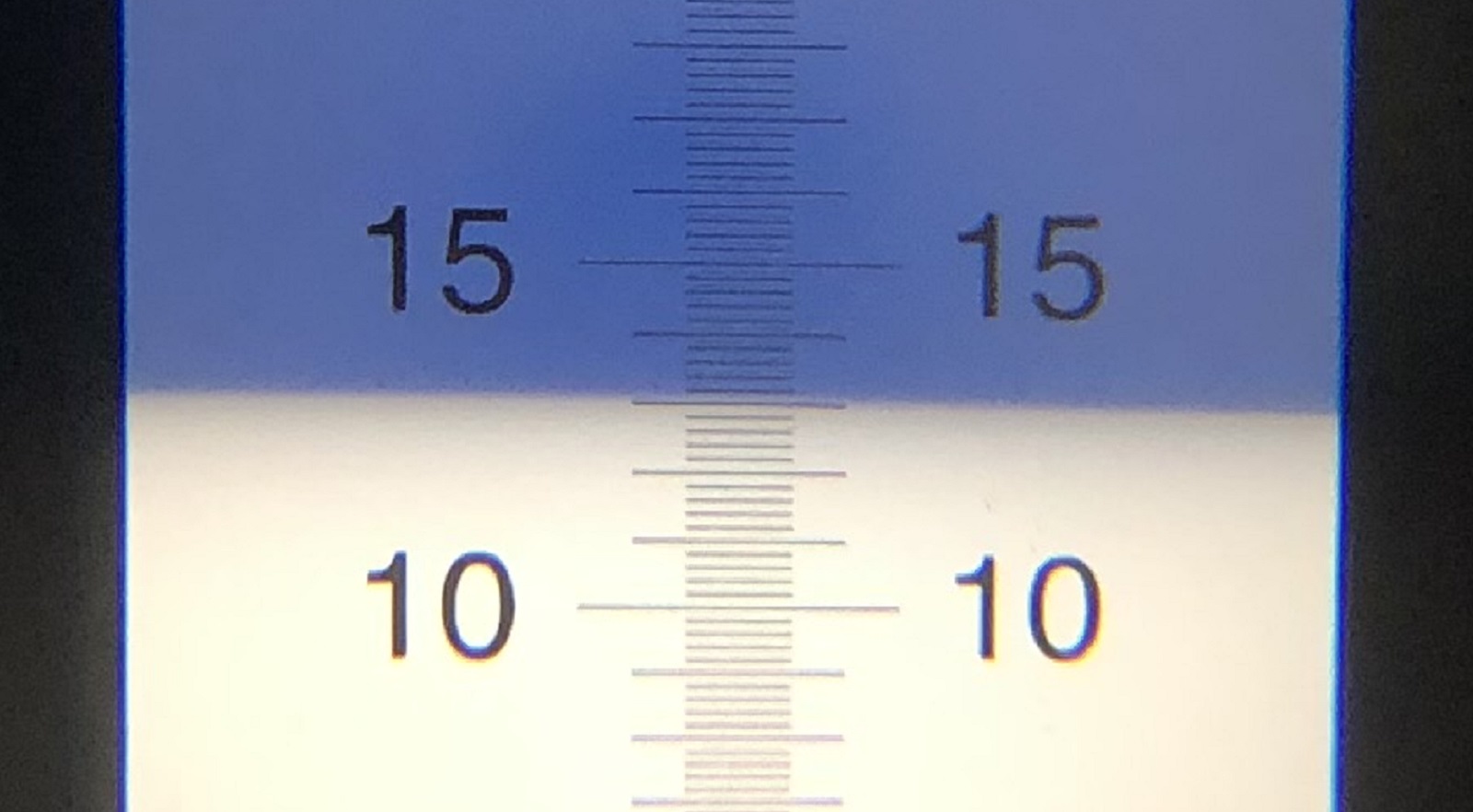
After a couple hours in my temperature controlled chamber, I pitched a pouch of Imperial Yeast G03 Dieter directly into the wort.
The beer was left to ferment at 66°F/19°C for 11 before I took a hydrometer measurement confirming FG was reached.
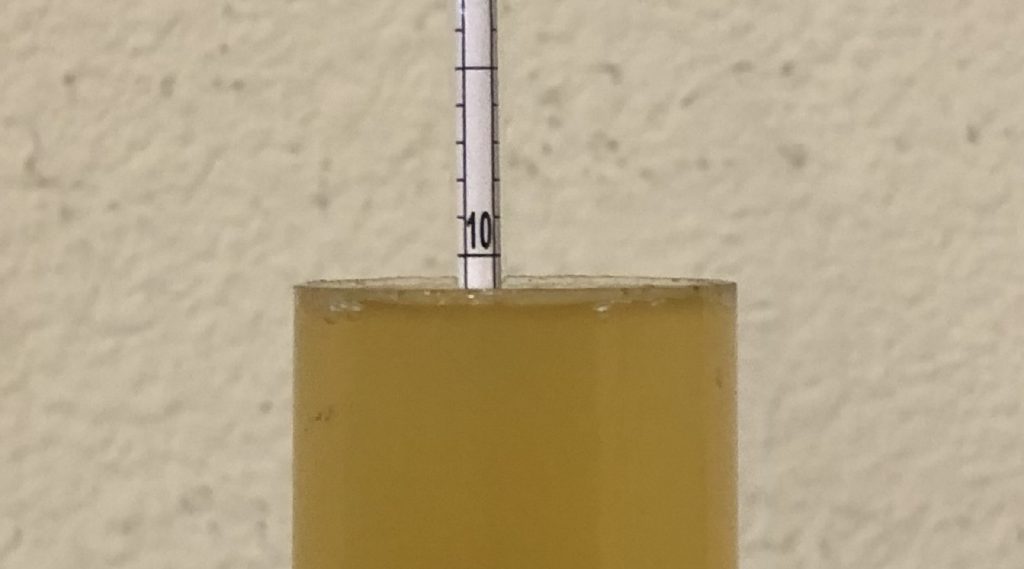
With fermentation complete, I transferred the beer to a CO2 purged keg and placed it in my keezer to chill and carbonate. After a week of conditioning, I began serving it to blind tasters.
| METHOD |
Participants were instructed to focus only on the aromatic qualities of the beer before evaluating the flavor. For each aroma and flavor descriptor, tasters were asked to write-in the perceived strength of that particular characteristic on a 0-9 scale where a rating of 0 meant they did not perceive the character at all and a 9 rating meant the character was extremely strong. Once the data was collected, the average rating of each aroma and flavor descriptor was compiled and analyzed.
| RESULTS |
A total of 42 people participated in the evaluation of this beer, all blind to the hop variety used. The average aroma and flavor ratings for each descriptor were plotted on a radar graph.
Average Ratings of Aroma and Flavor Perceptions
The 3 characteristics endorsed as being most prominent by participants:
| Aroma | Flavor |
| Tropical Fruit | Floral |
| Stone Fruit | Stone Fruit |
| Citrus | Grassy |
The 3 characteristics endorsed as being least prominent by participants:
| Aroma | Flavor |
| Onion/Garlic | Onion/Garlic |
| Dank/Catty | Berry |
| Earthy/Woody + Pine (tie) | Dank/Catty |
When asked to rate the pungency/strength of the hop, most tasters perceived it as being mildly to moderately pungent.
Tasters were then instructed to identify beer styles they thought the hop would work well in.
Finally, participants were asked to rate how much they enjoyed the hop character on a 1 to 10 scale.
My Impressions: When first sampling this Sterling hop beer, I immediately perceived a banana character that was different than what I get in beers heavy in isoamyl acetate. Rather than being candy-like, it was more akin to a freshly peeled ripe banana with hints of pear in the background. To my tastes, at least at the hopping rates I used for this THC beer, I think Sterling would work well in more malt-forward amber and brown ales.
| CONCLUSION |
Marketed as an American substitute for Czech Saaz, Sterling is described as imparting a blend of spicy, floral, and fruity characteristics to beer. While tasters who evaluated a Pale Ale hopped entirely with this variety didn’t seem to pick up much spice, they did rate tropical fruit and floral as the most prominent aroma and flavor characteristics, respectively.
When comparing this data to that from a past Hop Chronicles on Czech Saaz, I noticed tropical fruit was also the higher rated aromatic, which had me wondering about the impact hopping rate has on beer hop character. While the consensus among tasters was that Sterling wasn’t terribly pungent, it seems plausible more “noble” notes might come through in a beer made with less hops, for example, in a style such as Pilsner.
This being my first time using Sterling, I was caught off-guard by the tropical fruit aroma, as I expected something more inline with other noble hops. While not entirely unpleasant, I don’t think it worked great on its own in this simple Pale Ale, and based on the preference ratings of blind tasters, it seems many agree. I’m certainly interested to see how Sterling plays in less hop-forward beers, and I can also see it working nicely in styles like Hefeweizen and Witbier.
Sterling hops are available now at Yakima Valley Hops, get them while you can! If you have any thoughts on this variety, please feel free to share them in the comments section below.
Support Brülosophy In Style!
All designs are available in various colors and sizes on Amazon!
Follow Brülosophy on:
FACEBOOK | TWITTER | INSTAGRAM
If you enjoy this stuff and feel compelled to support Brulosophy.com, please check out the Support page for details on how you can very easily do so. Thanks!



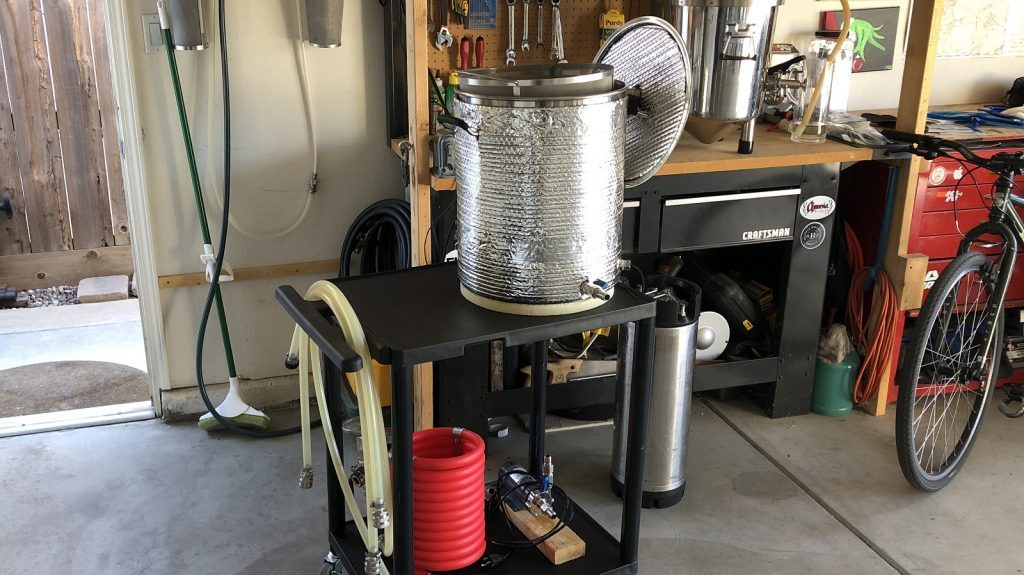
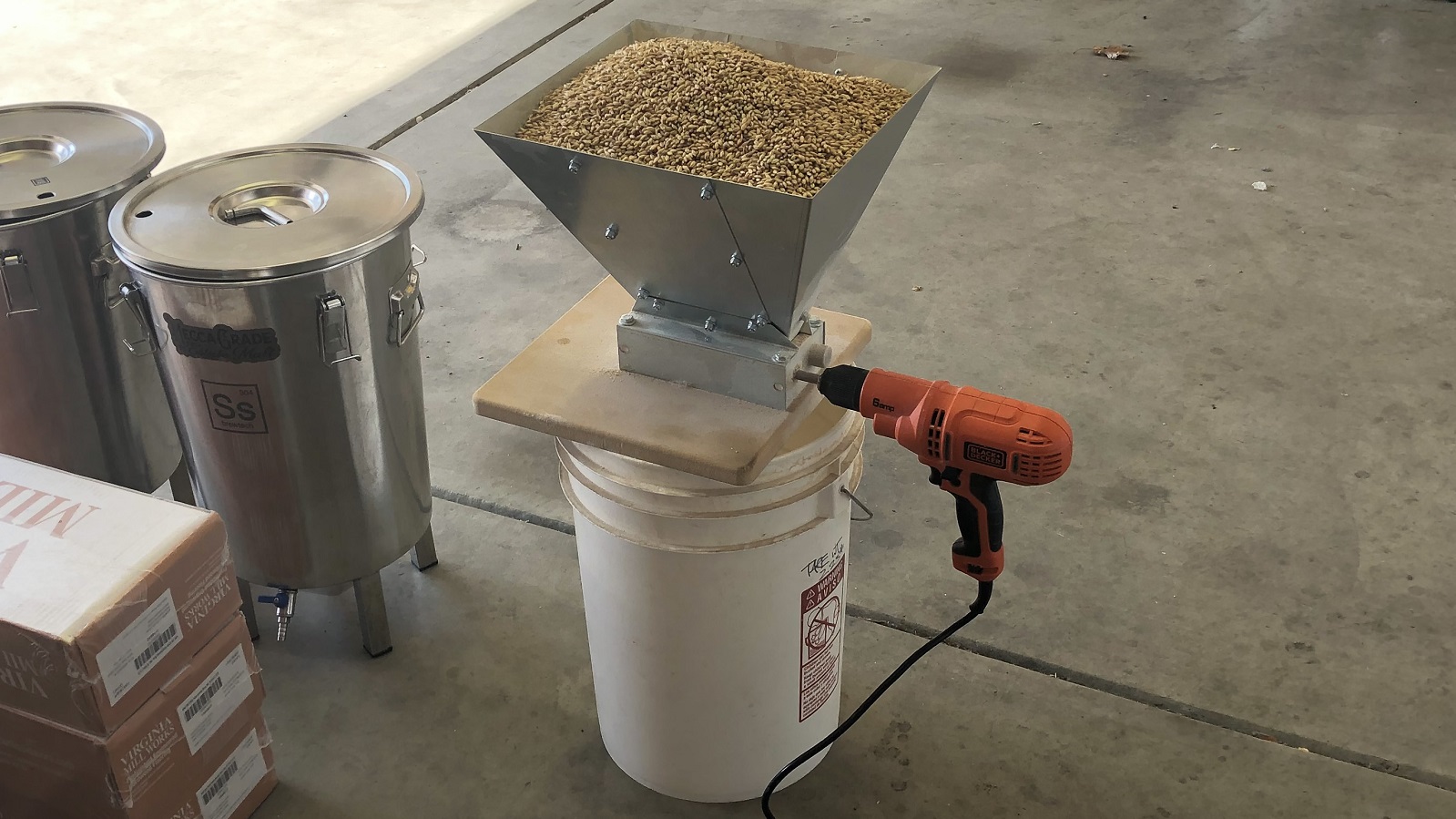
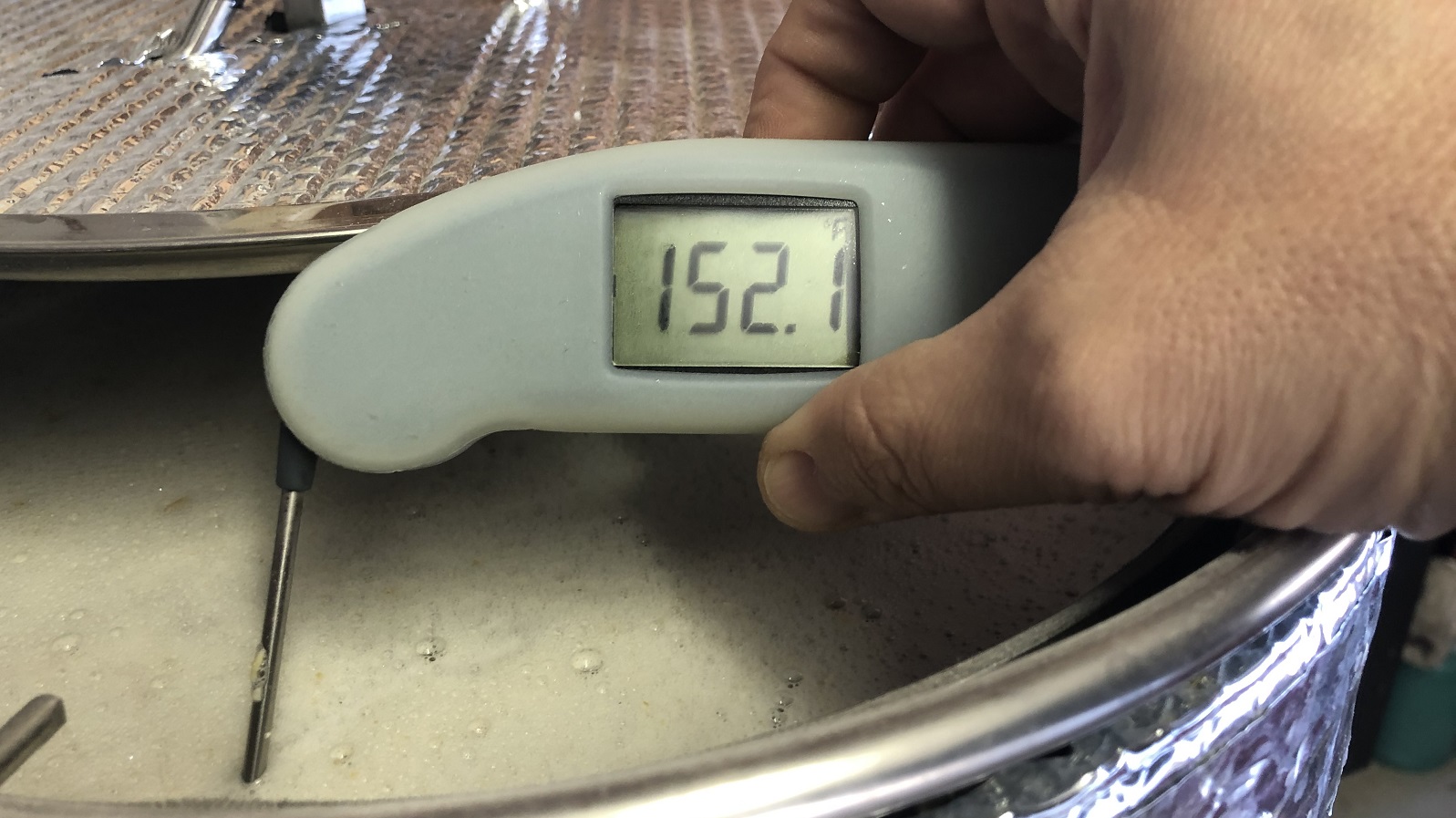
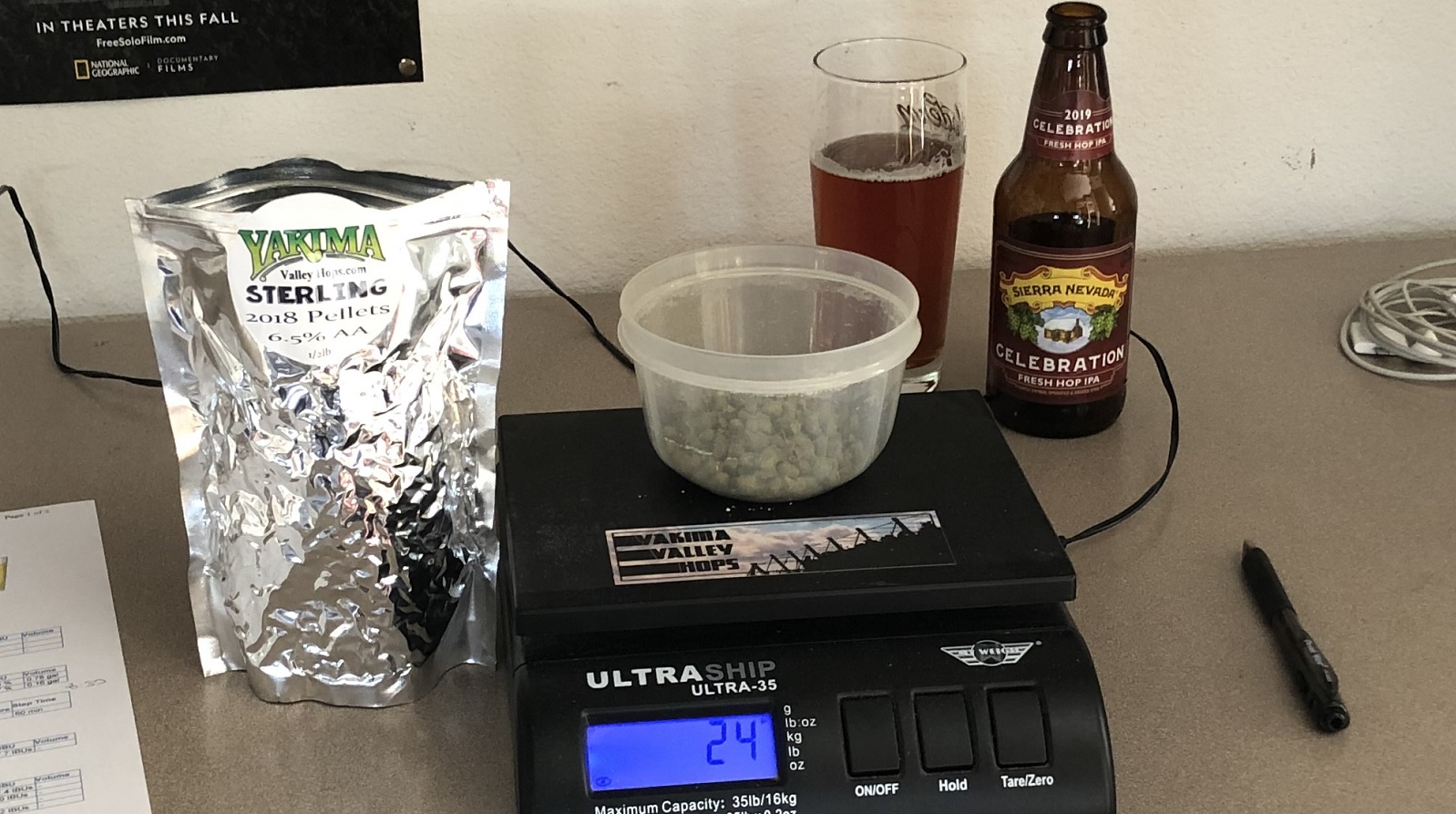
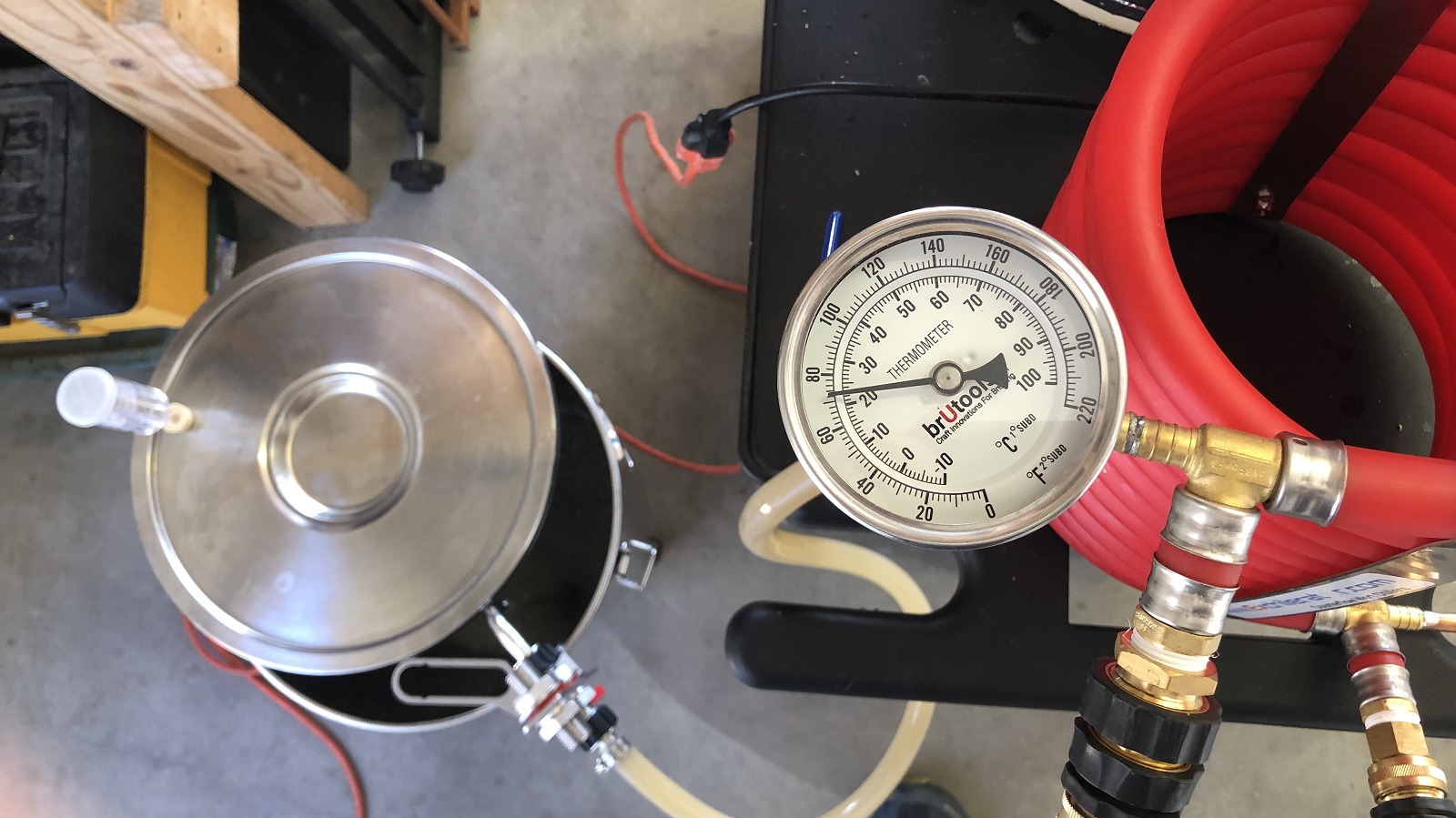
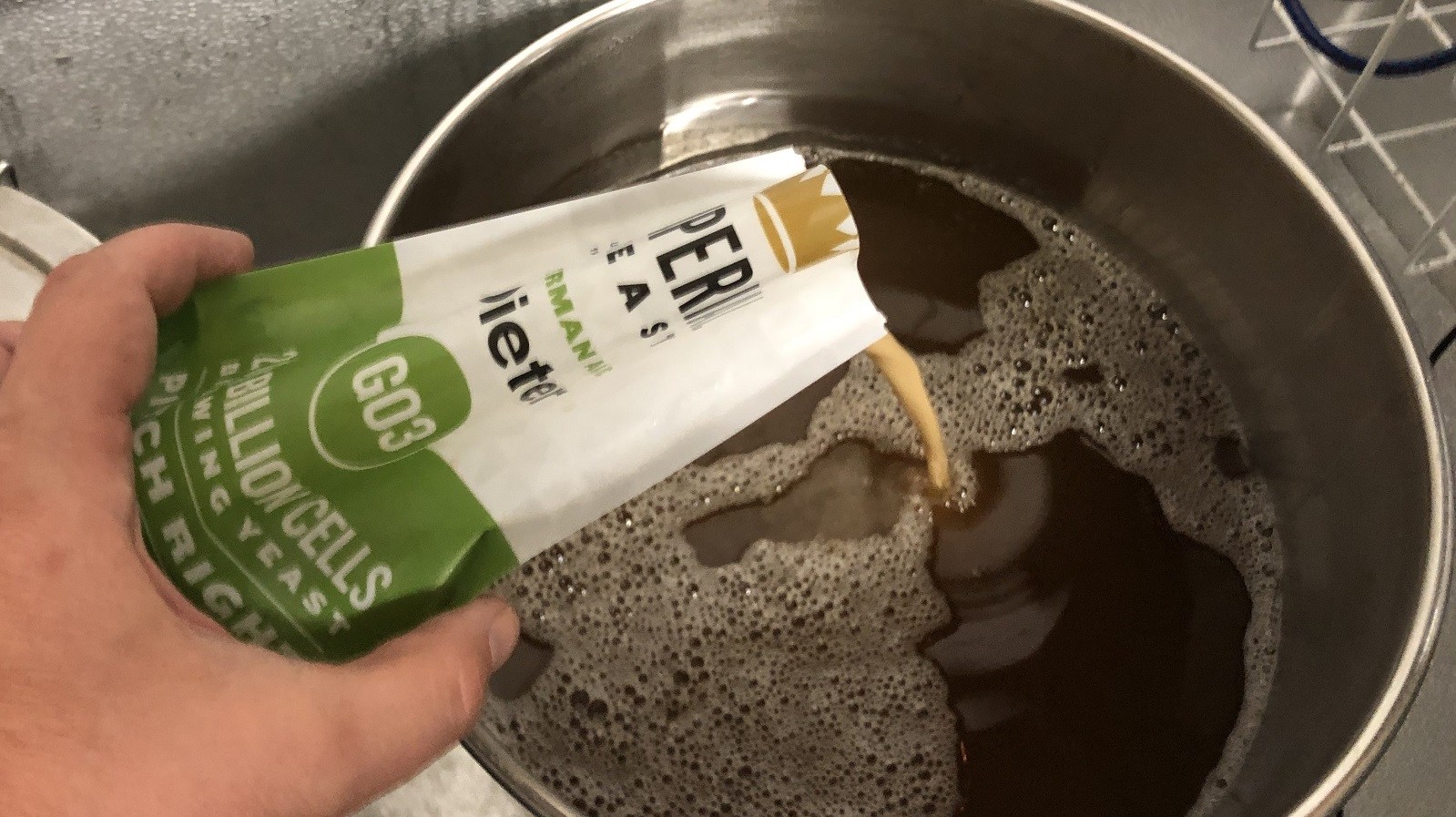
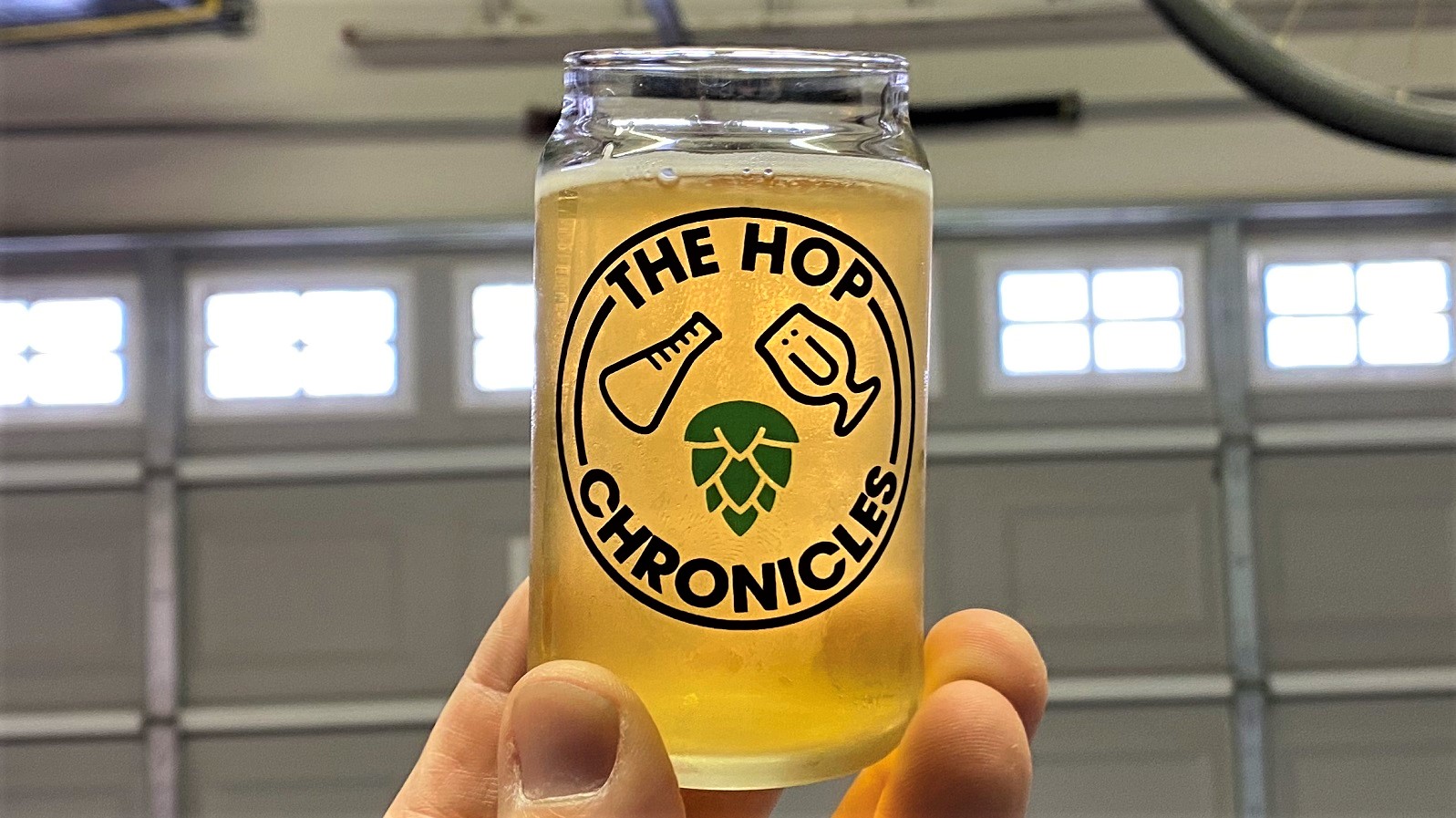

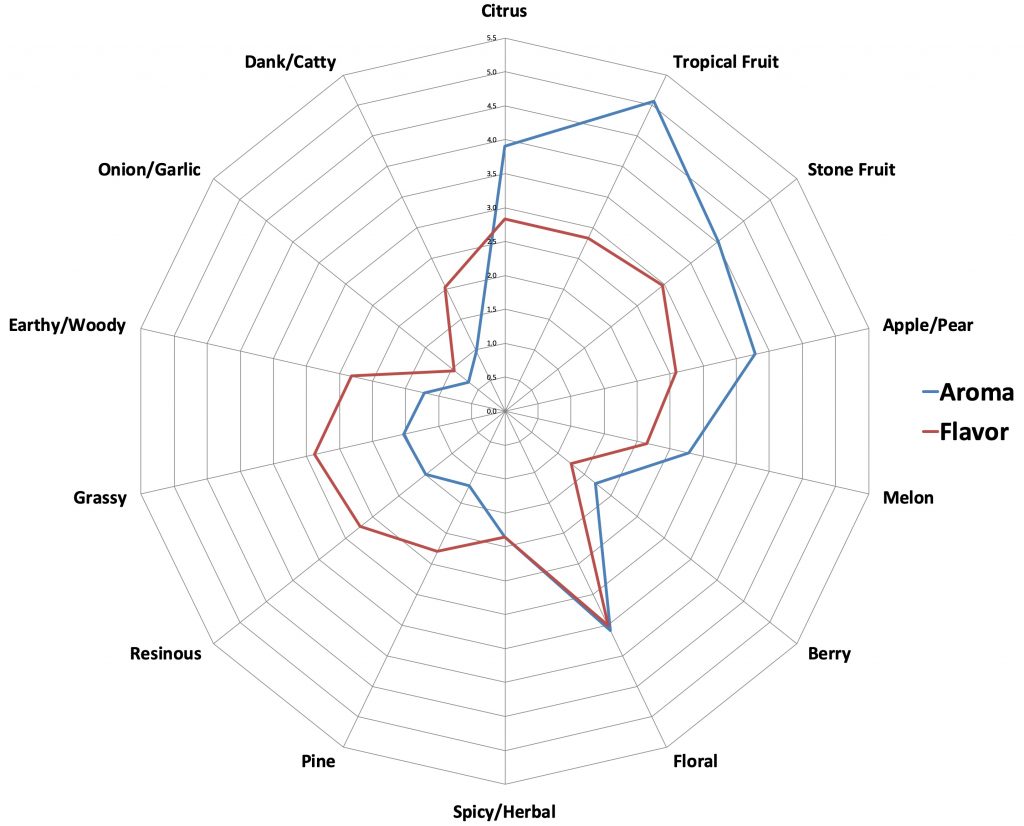
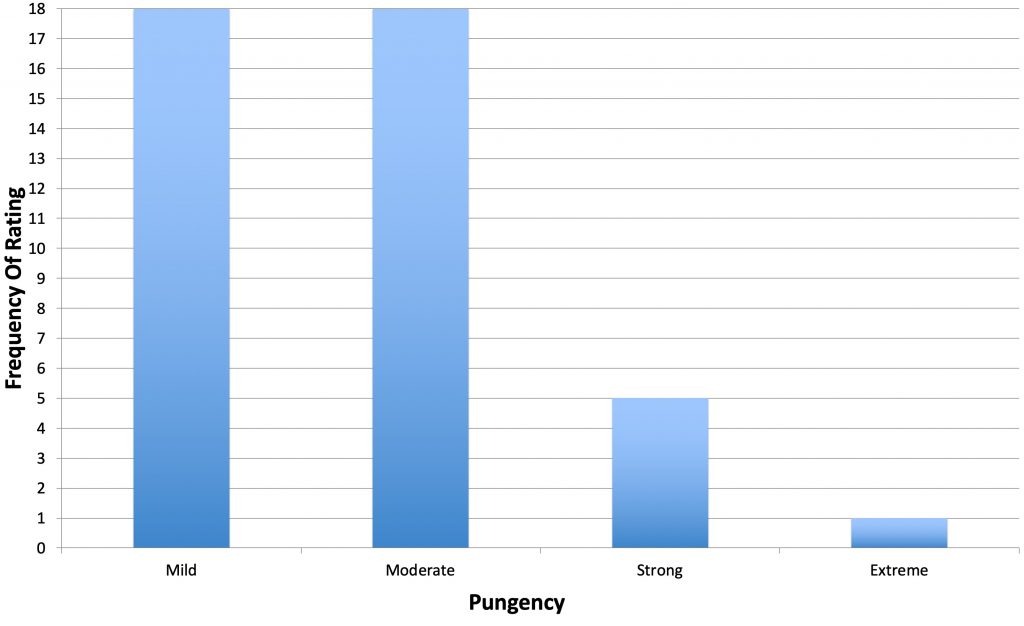
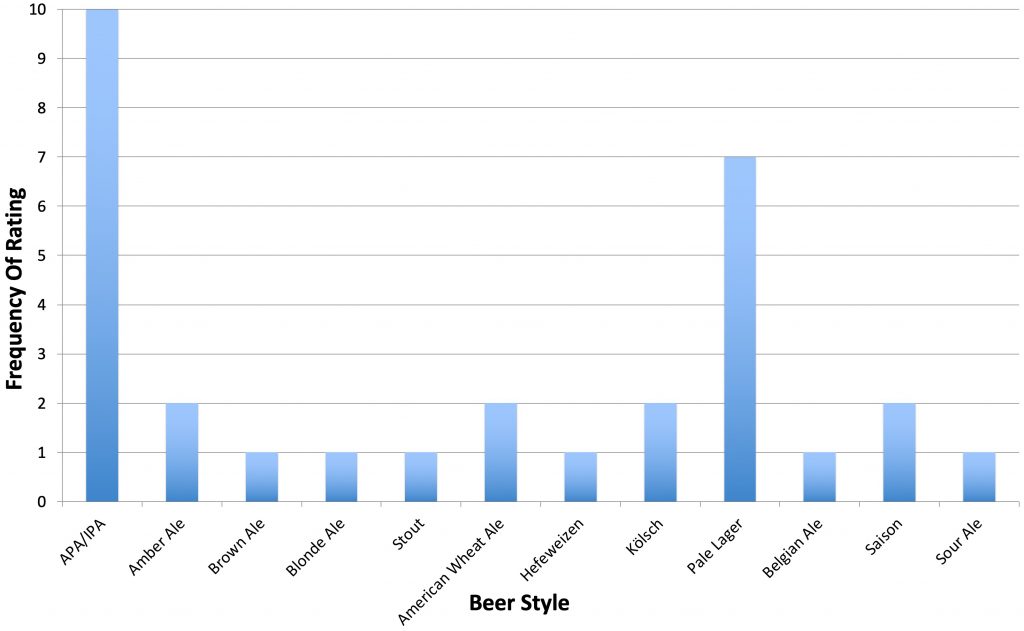
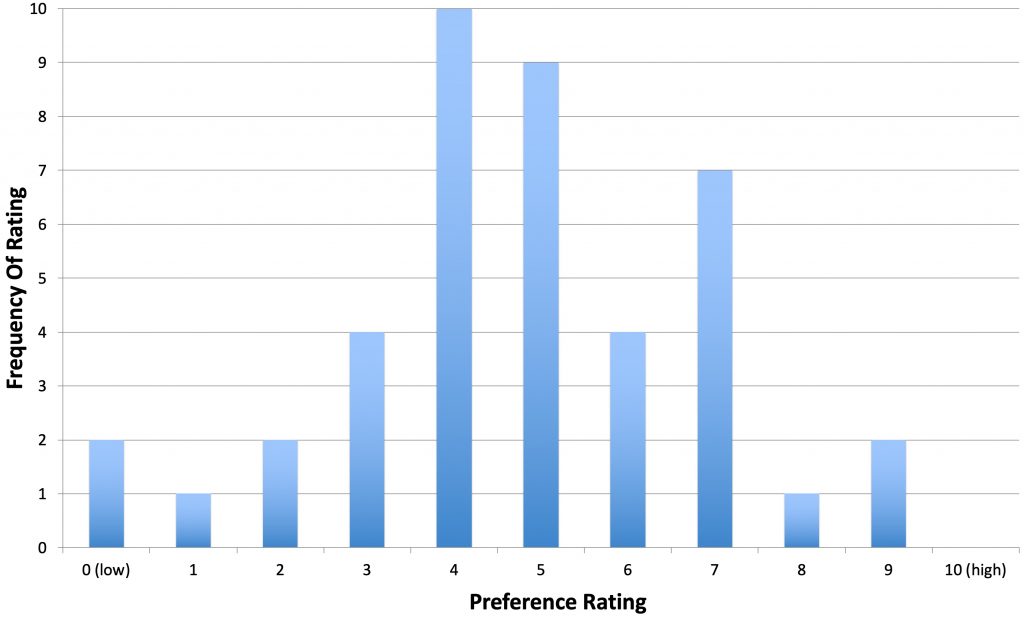











10 thoughts on “The Hop Chronicles | Sterling (2018) Pale Ale”
I have used sterling in a few lagers with good success. I also used it in a saison I thought turned out really nice.
I was hoping Sterling could be viable alternative to Saaz… since cheaper, easier to get and I like whole leaf hops in hop back. But I’m concerned about the anemic overall preference ratings. Seems like tasters thought the hop flavor was so so. Am I interpreting this correctly?
I try to use all american ingredients as a nod to regionality and old school brewing. Plus, it gives my beers its own unique taste. Ive been making lagers with sterling as my saaz substitute, Mt hood in place of hallertau, and santiam instead of tettnang with good results. Noble “like”, but with a little more fruitiness thats probably an element of PNW terroir
I’ve made several Kolsches (Kolschs?) with Sterling and Dieter yeast and I always get banana when I ferment above 60 degrees. I even reached out to Imperial about it. I assumed the banana was coming from the yeast and not the hops.
When I fermented the beer again with Sterling at 60 degrees, the banana disappeared and pear notes came into play.
Even when I switched the recipe to Cascade instead of Sterling, I was still getting pear at 60 degrees.
I think that yeast needs to be fermented cold to limit those esters. Perhaps even below 60. This is only from my experience using this yeast about 10 times in the last year. I’m bound to get it right!
I’ve never gotten banana from Sterling when I used it. Maybe it’s a reaction between sterling and Dieter? I usually ferment Dieter between 62-66F and Ive never gotten banana. It’s actually one of my favorite strains which I use for pales, kölsch, Alt, and others. BUT…I’ve never used them together….
The plural form of Kölsch is Kölsch. Kind of like sheep or fish.
I’ve used dieter/wlp029 for years as my main yeast. I generally use it at 65 to 68, and have never gotten banana. One man’s sense memory though, so take it for what it’s worth…
I use Sterling quite frequently, and I find that hot side additions (under 1/2 oz/gallon) give me a very Saaz-like spice note. Higher amounts in the whirlpool and dry-hopped give a nice lemonade flavor. It doesn’t hit that oily/saturated IPA level of flavor, but it’s nice in an APA or dry-hopped blonde/pale lager.
I will say that I’ve had mixed results with Sterling over the years from different sources. I now have one supplier that I stick to, who gets high-quality hops with reliable flavor and aroma profiles from year to year. Ever since, Sterling is my mainstay hop for all of my lager brewing.
Hi Eric, where do you get your Sterling from?
Hop Heaven. He has a shop on eBay and his hops are all excellent quality
And yet you didn’t tell us who that supplier is… I’ll never understand why people make comments like this. Totally UNhelpful.